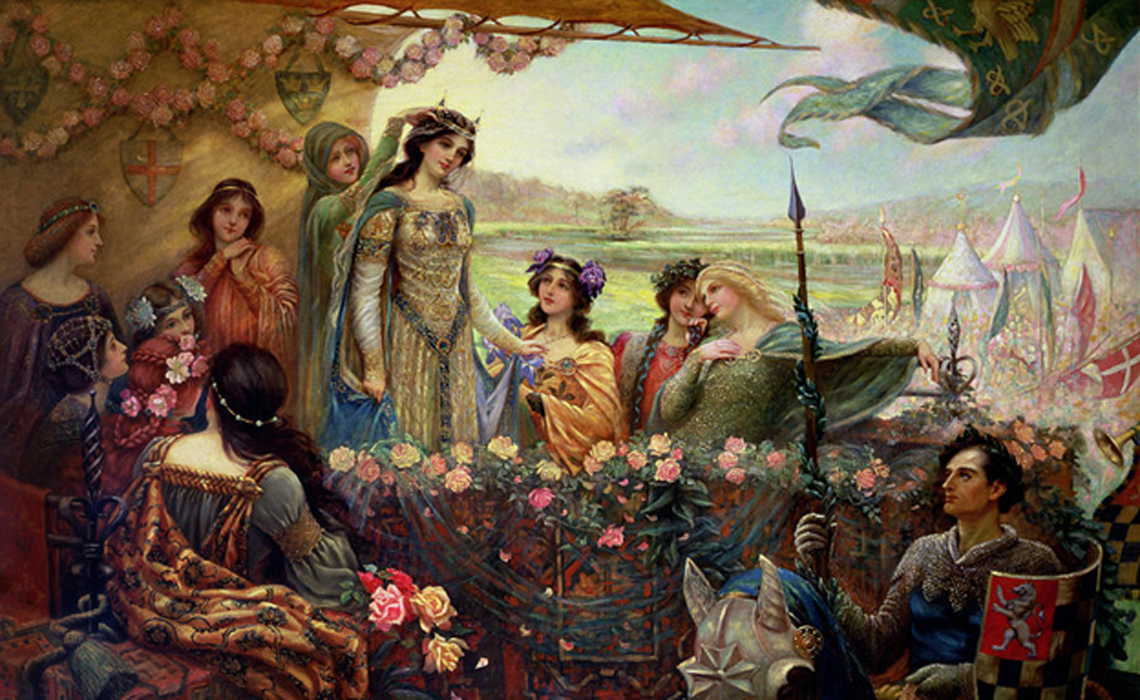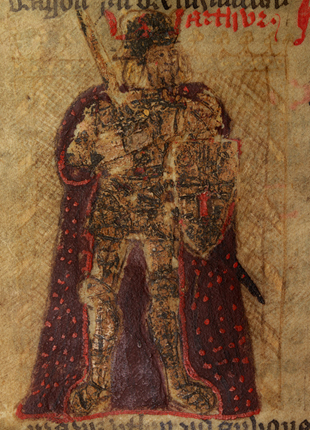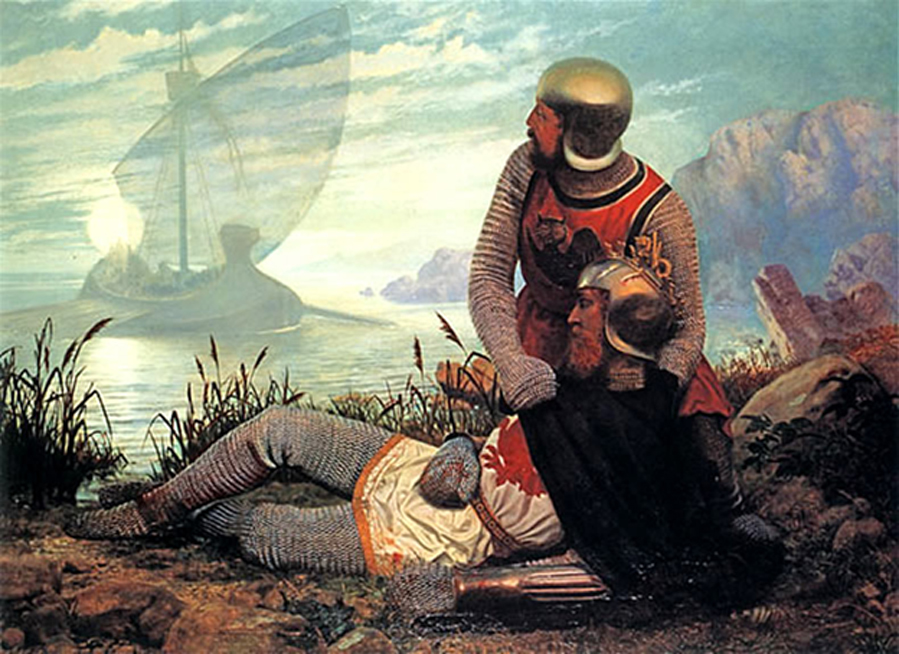
Faeries in the Realm of King Arthur
Faeries may be just figments of our imagination, but they may have deeper roots of Celtic origin embedded in oral narratives and serve to remind us of a long-forgotten belief system that embraced a metaphysical faerie otherworld. Medieval authors introduced an ethereal quality into the genre of literary myths, known as The Matter of Britain, while The Mabinogion, refers to a body of 13th and 14th century literature, that differed from The Matter of Britain, but was also rooted in early faerie belief systems in Wales. Geoffrey of Monmouth became the 12th century author who penned down oral folklore and introduced faeries into the realm of the legend of King Arthur.

King Arthur. A rough illustration of a Welsh version of the 15th century of the Historia Regum Britanniae of Geoffrey of Monmouth. (CC0)
The Roots of the Arthurian Mythos:
When Geoffrey of Monmouth produced his Historia Regum Britanniae and Vita Merlini between 1135 and 1150, he became the central transmitter of the Arthurian mythos; from a largely oral testimony to a written body of legend that has continued to develop to this day. Geoffrey may have had access to some of the early sources, such as St Gildas’ De Excidio et Conquestu Britanniae (6th century) and Nennius’ Historia Brittonum (9th century) and possibly other lost literary sources, which suggest Arthur could have been a 5th or 6th century British chieftain. But it seems clear that much of his Historia and the Vita Merlini used an orally transmitted folklore to construct the ontology of the inhabitants of his Arthurian stories.
Although many scholars of the following generation, such as Giraldus Cambrensis, derided Geoffrey’s account of Dark-Age history as ‘a book full of lies and made-up fables’, it retained its influence over later medieval authors and helped to imbue a supernatural ambience into the literary mythical cycle that would come to be known as ‘The Matter of Britain’. Writers such as Chrétien de Troyes, Wolfram von Eschenbach and Sir Thomas Malory took the core of Geoffrey’s Historia and Vita Merlini, and proceeded to convert it to their own literary ends. In part this involved them taking the opportunity to culturally code the stories to their own social milieus, but they were also channeling some of the deeply embedded folkloric motifs contained in the legends, that have their roots in an ancient Celtic oral tradition. One of these sets of story motifs include the genus of characters, who seem to be part of the physical world, but also part of a metaphysical otherworld. These are the faeries, and they play a critical role throughout the Arthurian landscape. Their forms and functions contain clues to help decipher some of the deeper meaning ingrained within the Arthurian mythos.

Death of King Arthur by John Garrick (1862) (Public Domain)
Place of the Faeries within the Noble Hierarchy
‘The Matter of Britain’ was written for the elite class of European medieval society. The stories were consumed by the small proportion of literate population and were codified accordingly to suit their social expectations. The appearance of characters with supernatural qualities within these stories had, therefore, to adhere to certain doctrines, which would be acceptable to their social mores and belief systems. Subsequently, the cast of characters specifically ascribed faerie qualities in the Arthurian mythos, were invariably given the attributes of nobility. Much medieval and later folklore includes facets of a royal hierarchical organization within the metaphysical faerie realm, but in the Arthurian cycle of stories the quality of ‘faerie’ is subsumed into a unique set of players, whose nobility ensured their respect and credence among the aristocratic audiences listening to or reading the stories. However, the embedded supernatural elements of the medieval Arthurian landscape, most especially the faerie motifs, contain the footprints of an older, Celtic tradition, which demonstrates that the faeries who found their way into The Matter of Britain represent a deeper cultural legacy than their plot-line actors may suggest.

Morgan le Fay by Frederick Sandys (1829 – 1904) (Public Domain)





